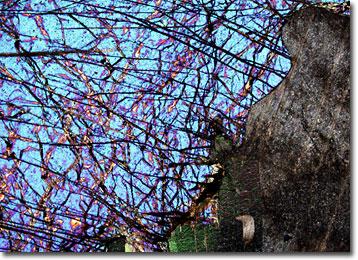Polarized Light Microscopy Digital Image Gallery
Phlogopite
Micas are a large group of silicate minerals that are best known for their perfect basal cleavage, which enables one to separate them into very thin, flexible sheets. Phlogopite, which is sometimes known as brown mica, is one of the most commercially important micas.

A hydrous silicate of potassium, magnesium, and aluminum, phlogopite often exhibits an unusual copperlike or bronze-red color, though it may also be yellowish or greenish hued. The precise coloration of the substance primarily depends upon its iron content, which also affects the density of the mineral. Phlogopite is usually formed metamorphically, but may also develop from plutonic forces. Significant deposits of the mica, which often appears as brown flecks in crystalline dolomite and marble, can be found within the United States in New York and New Jersey, as well as in various other parts of the world, such as Finland and Canada.
Phlogopite is closely related to, and is often found with, biotite. It is the amount of iron found within the minerals that chiefly distinguishes them from one another, biotite containing significantly greater amounts of the metallic element than phlogopite. Due to its low iron content, phlogopite forms a good insulator and is widely utilized for such purposes in the electrical industry. Due to the commercial value of the mineral, several attempts to synthesize it the laboratory have been made. However, the synthesis of phlogopite remains cost prohibitive, it generally being considered much cheaper to obtain the natural mineral.
